Discover 7 lush trailing plants perfect for indoor hanging baskets! From the whimsical string of pearls to the hardy pothos, I’ll share my favorite picks and care tips to help you bring life and beauty to your home. Let’s grow together!

Trailing plants draping from hanging baskets bring life, texture, and nature indoors, and there’s something magical about it. As a lifelong lover of filling my home with greenery, I’ve tried countless trailing plants over the years. In this guide, I will show you 7 of my favorite lush trailing plants perfect for growing in indoor hanging baskets. For the plant newbie to the seasoned plant parent, these beauties will elevate your indoor space.
Why Choose Trailing Plants for Your Hanging Baskets?
Trailing plants are also great for hanging baskets as their long, cascading vines offer a great visual effect. They’re also perfect for smaller spaces, as they help draw the eye upward and introduce vertical interest. Also, several trailing plants are low-maintenance and suitable for indoor environments, so sneaking these into my life to appease my green thumb (at least a little) is a perfect solution for busy plant lovers like me. I still remember the first time I hung a pothos in my living room, and how it practically turned the ambience into a cozy green oasis.
Gorgeous Trailing Plants for Indoor Hanging Baskets
1. String of Beads (Senecio rowleyanus)
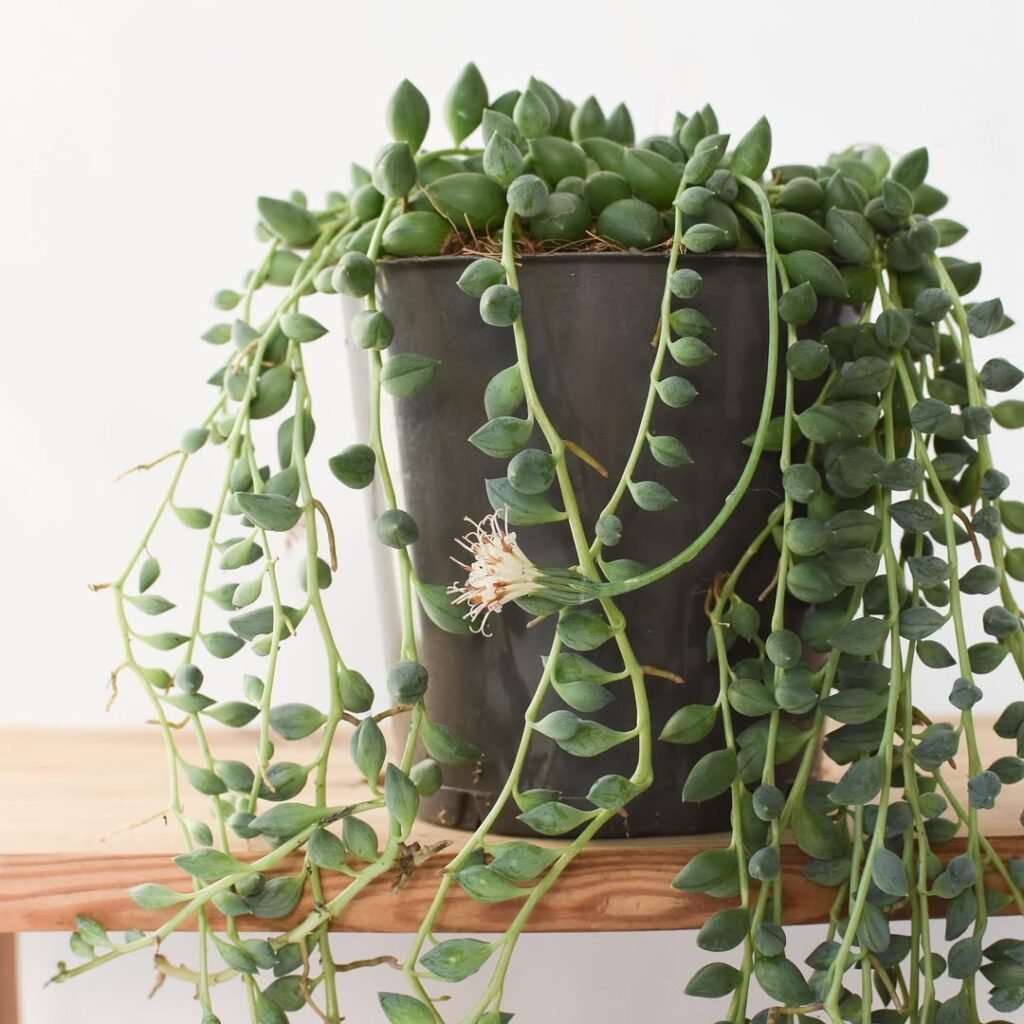
An unusual succulent with berry-like leaves that appear like pearls.
Care Tips: Prefer bright, indirect light and well-draining soil. Water only when needed — overwatering can result in root rot.
Why I Love It: The playful, trailing vines of string of pearls make it a star attraction in any room. I keep my own hanging by a sunny window, and it never fails to elicit joy.
Pro Tip: Put it near a sunny window, but out of direct sunlight, which can burn the leaves.
More Details: String of Pearls Care Guide
2. Pothos (Epipremnum aureum)
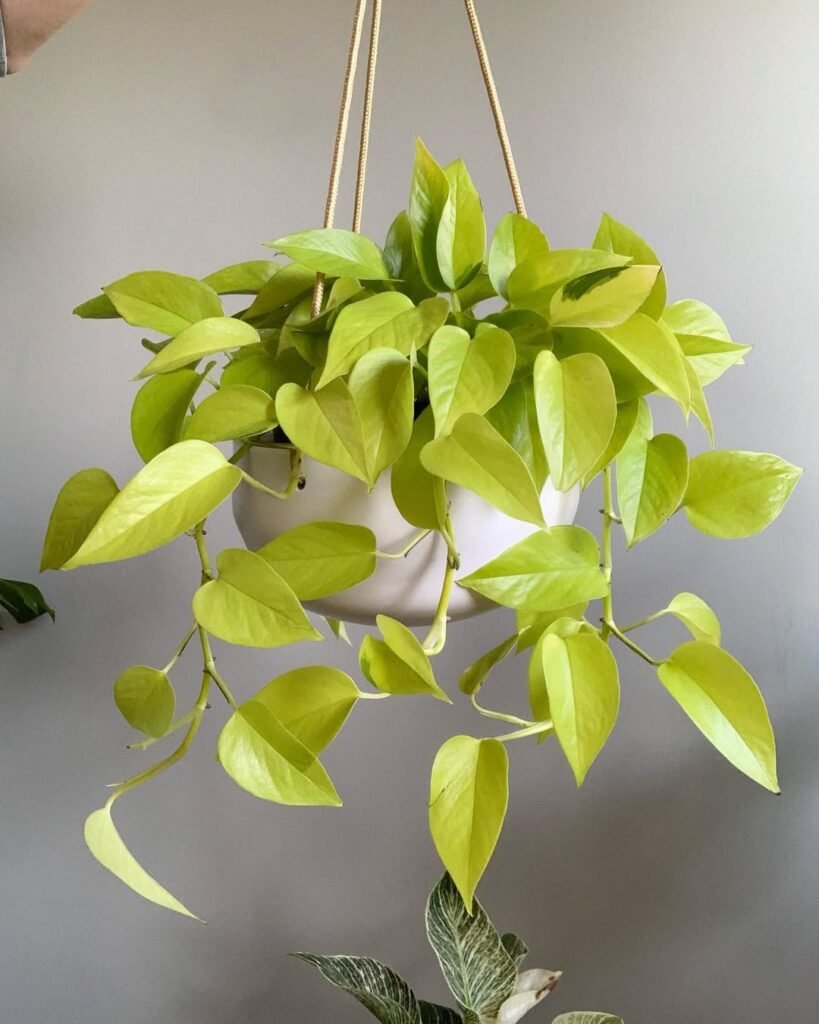
This vining hardy is heart-shaped with green, yellow, or white leaves.
Care Tips: Thrives in low to bright indirect light. Water whenever the top inch of soil dries out.
Why I Love It: Pothos is practically indestructible and grows quickly, which is why it’s great for beginners. My golden pothos was one of my early plants, and it’s doing fantastic years later!
Pro Tip: Cut back the vines to grow bushier instead.
Learn More: Pothos Plant Care
3. String of Hearts (Ceropegia woodii)
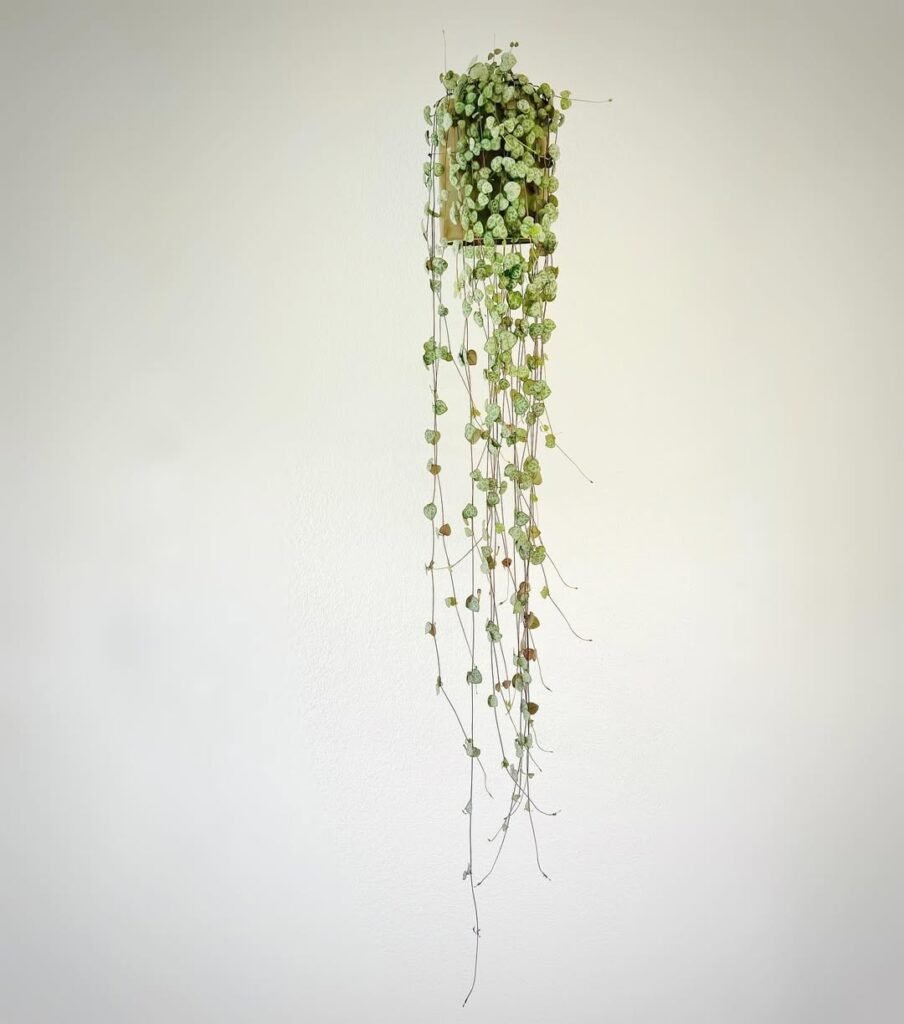
A tender plant with heart-shaped leaves and trailing vines.
Care Tips: They thrive in bright, indirect light and well-draining soil. Let the soil dry out in between waterings.
Why I Love It: The delicate leaves and pinkish stems give a romantic vibe to any room. I keep mine in my bedroom, and it makes me feel like I have a living work of art.
Pro Tip: It’s easy to grow a new plant from cuttings by propagating in water!
Read More: String of Hearts Care Tips
4. English Ivy (Hedera helix)
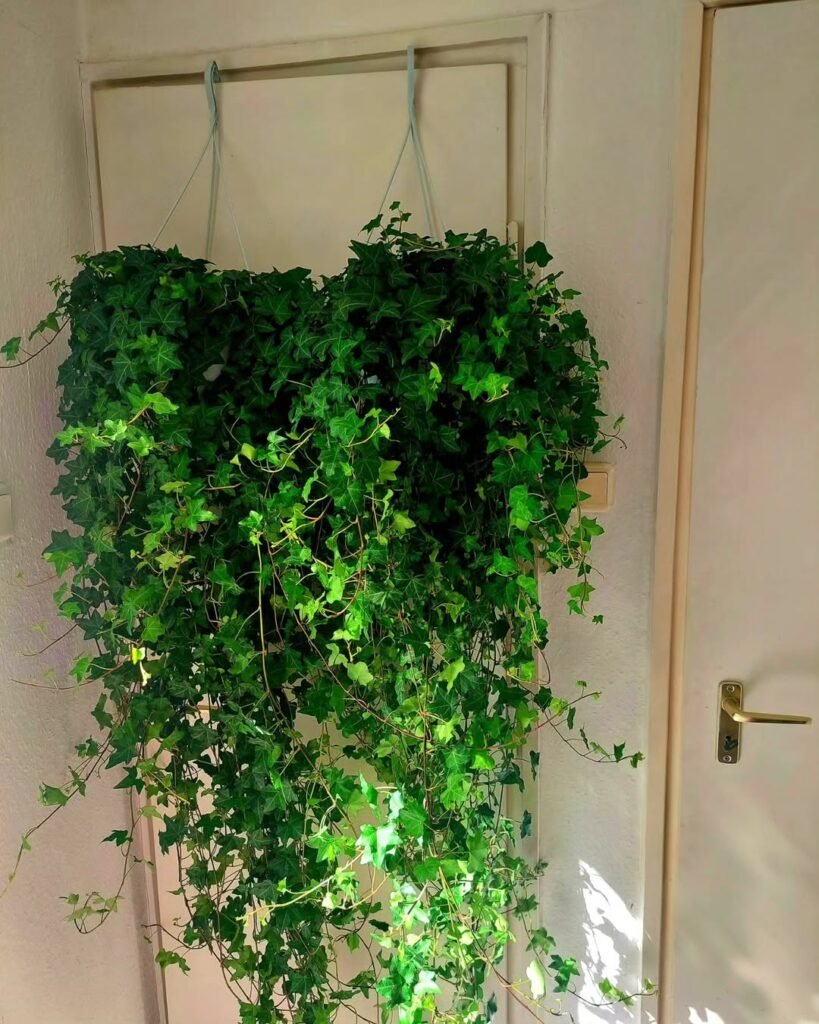
A trailing plant with lobed, dark green leaves.
Care Tips: Requires bright, indirect light and humidity. Mist regularly for humidity.
Why I Love It: English Ivy brings a classic, sophisticated energy to any space. I love that it drapes down from my bookshelf to create a cozy, library-esque environment.
Pro Tip: Store it where pets can’t get into it — it can be toxic if ingested.
Find Out More: Guide to Caring for English Ivy
5. Burro’s Tail (Sedum morganianum)
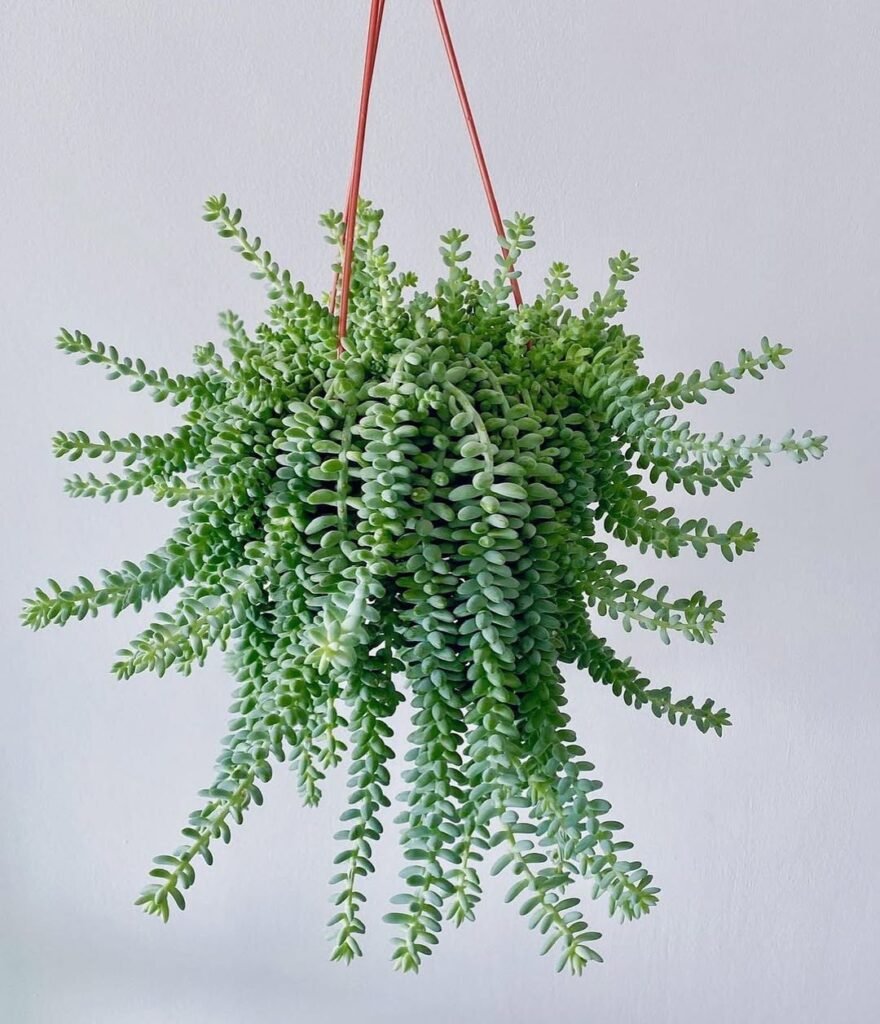
Another succulent that has plump, blue-green leaves that will spill over nicely.
Care Tips: Requires bright light and well-draining soil. Water minimally, particularly over winter.
Why I Love It: The chunky leaves and cascading vines create a unique touch in any plant collection. Mine is hanging in my kitchen, and it is always a conversation piece!
Pro Tip: Avoid jostling as the leaves are prone to falling.
Read More: Burro’s Tail Growing Information
6. Chlorophytum comosum (Spider Plant)
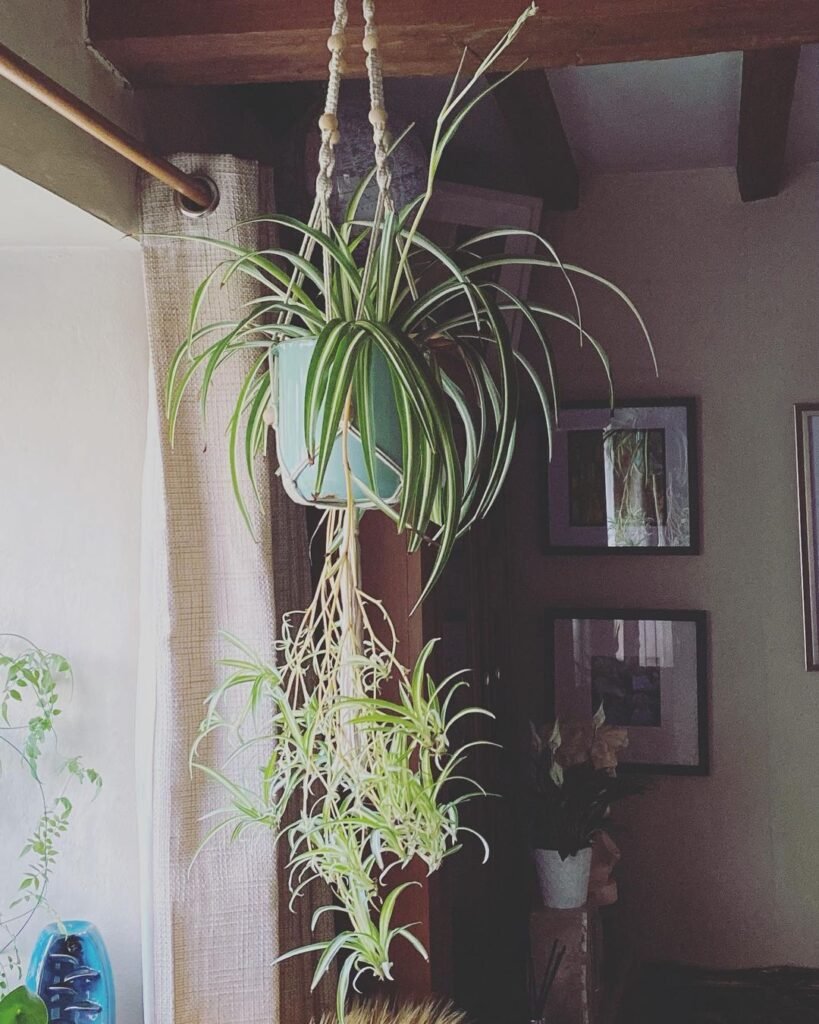
One of the most popular types of plants, has arching green and white striped leaves and baby plantlets.
Care Tips: Thrives in bright, indirect light. Water when the top inch of soil is dry.
Why I Love It: Spider plants are low-maintenance and produce little “spiderettes” that can be propagated. So many spider plant babies I’ve gifted to friends and family!
Pro Tip: Try to hang it in a bathroom — it loves humidity!
Learn More: Spider Plant Care
7. Philodendron Brasil (Philodendron hederaceum ‘Brasil’)
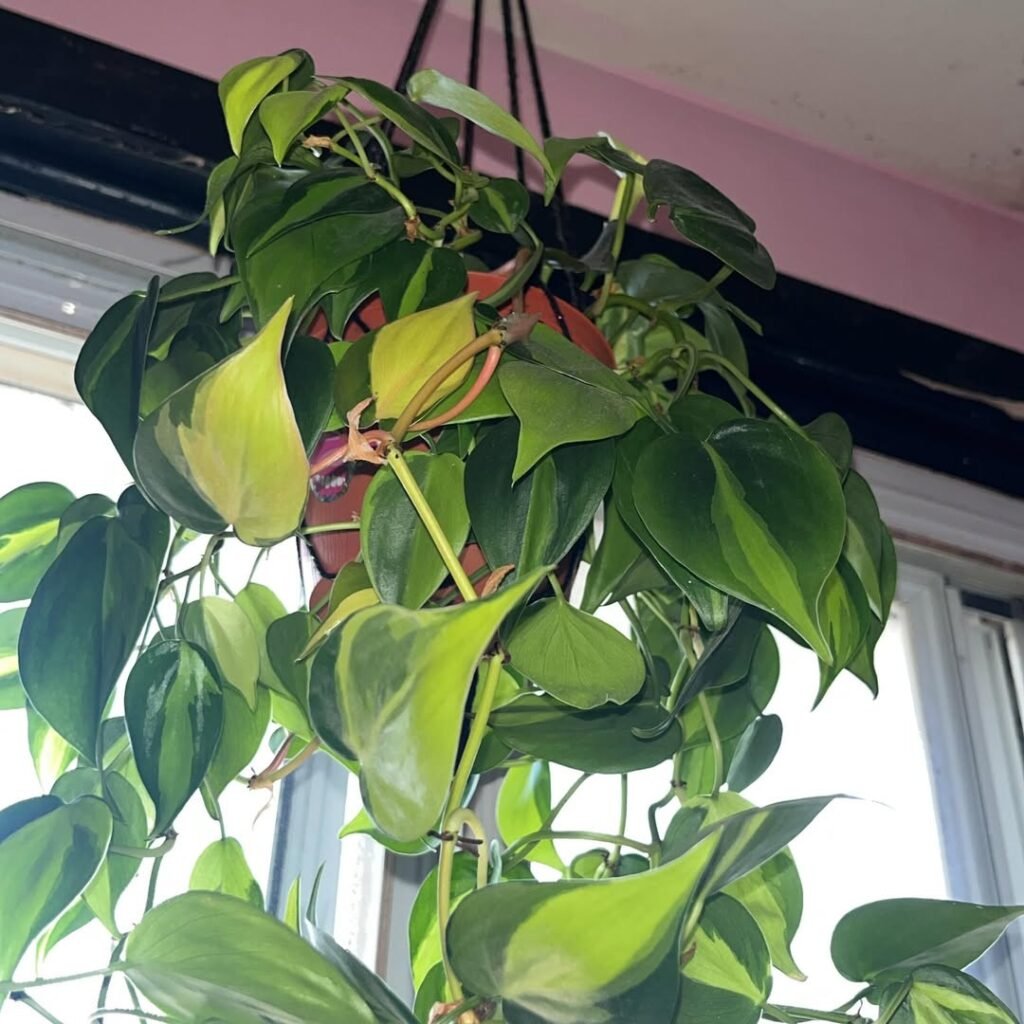
Heart-shaped green-yellow leaves.
Care Tips: Likes bright, indirect light and soil with good drainage. Water when the top inch of soil is dry to the touch.
Why I Love It: The colorful leaves add brightness to any room, and it is super low-care. My Philodendron Brasil lives in my home office, and its sunny leaves brighten my day.
Tip: At least once a week, give the basket a quarter turn to ensure that your veggies grow evenly.
Read More: Philodendron Brasil Care Guide
Advice for Growing Trailing Plants in Hanging Baskets
- Choose the Right Basket: Use a basket with drainage holes to prevent waterlogging.
- Use Quality Soil: Choose a well-draining potting mix appropriate for the type of plant (think cactus mix for succulents).
- Water Wisely: Overwatering is one of the biggest problems — always check the soil first.
- Give Enough Light: Most trailing plants have a preference for bright, indirect light. Placement will depend on the needs of the plant.
- Prune Regularly: Cutting back long vines promotes bushier growth and deters legginess.
Conclusion
Trailing plants are a great way to bring greenery and visual interest into your home. From the fanciful string of pearls to the hardy pothos, there’s a trailing plant for every style and level of experience. I’ve either personally fallen in love with each of these plants or have them at home, and I hope they can bring as much joy to your home as much as they have in mine.
What is your favorite trailing plant? Have you attempted to grow any for your home? Let me know in the comments below how your experience was or will be like — I’d love to hear from you! And if you’d like additional indoor gardening tips, my guide on How to Care for Houseplants may help.

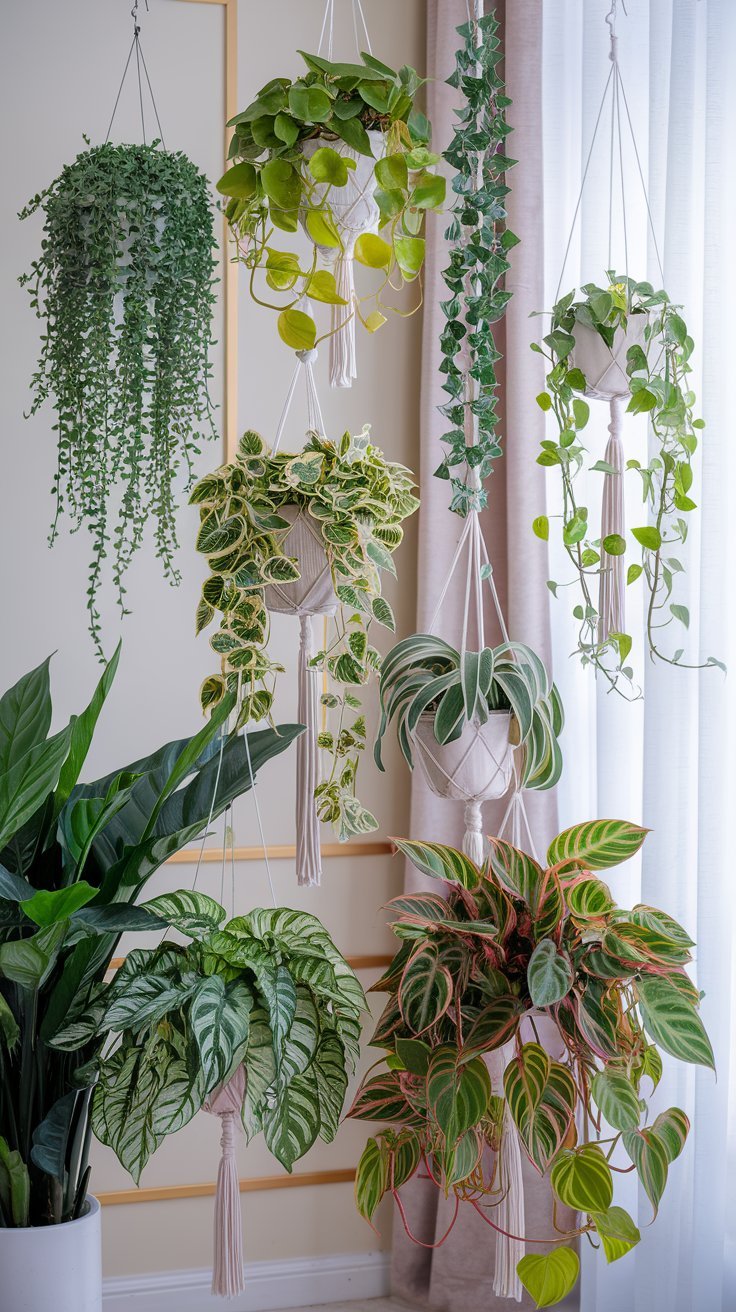



One comment on “7 Lush Trailing Plants for Indoor Hanging Baskets”